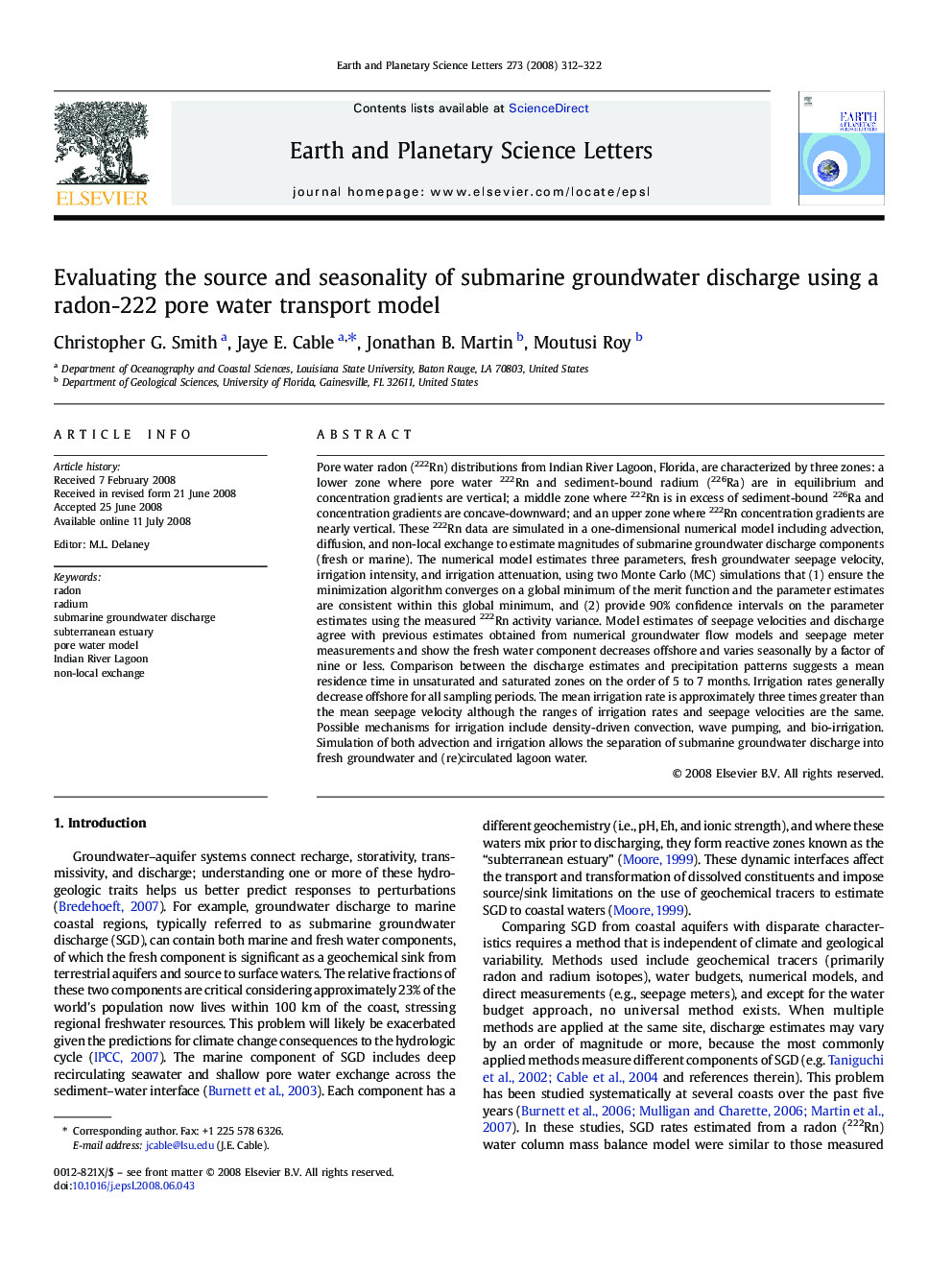| کد مقاله | کد نشریه | سال انتشار | مقاله انگلیسی | نسخه تمام متن |
|---|---|---|---|---|
| 4679502 | 1634889 | 2008 | 11 صفحه PDF | دانلود رایگان |
عنوان انگلیسی مقاله ISI
Evaluating the source and seasonality of submarine groundwater discharge using a radon-222 pore water transport model
دانلود مقاله + سفارش ترجمه
دانلود مقاله ISI انگلیسی
رایگان برای ایرانیان
کلمات کلیدی
موضوعات مرتبط
مهندسی و علوم پایه
علوم زمین و سیارات
علوم زمین و سیاره ای (عمومی)
پیش نمایش صفحه اول مقاله

چکیده انگلیسی
Pore water radon (222Rn) distributions from Indian River Lagoon, Florida, are characterized by three zones: a lower zone where pore water 222Rn and sediment-bound radium (226Ra) are in equilibrium and concentration gradients are vertical; a middle zone where 222Rn is in excess of sediment-bound 226Ra and concentration gradients are concave-downward; and an upper zone where 222Rn concentration gradients are nearly vertical. These 222Rn data are simulated in a one-dimensional numerical model including advection, diffusion, and non-local exchange to estimate magnitudes of submarine groundwater discharge components (fresh or marine). The numerical model estimates three parameters, fresh groundwater seepage velocity, irrigation intensity, and irrigation attenuation, using two Monte Carlo (MC) simulations that (1) ensure the minimization algorithm converges on a global minimum of the merit function and the parameter estimates are consistent within this global minimum, and (2) provide 90% confidence intervals on the parameter estimates using the measured 222Rn activity variance. Model estimates of seepage velocities and discharge agree with previous estimates obtained from numerical groundwater flow models and seepage meter measurements and show the fresh water component decreases offshore and varies seasonally by a factor of nine or less. Comparison between the discharge estimates and precipitation patterns suggests a mean residence time in unsaturated and saturated zones on the order of 5 to 7Â months. Irrigation rates generally decrease offshore for all sampling periods. The mean irrigation rate is approximately three times greater than the mean seepage velocity although the ranges of irrigation rates and seepage velocities are the same. Possible mechanisms for irrigation include density-driven convection, wave pumping, and bio-irrigation. Simulation of both advection and irrigation allows the separation of submarine groundwater discharge into fresh groundwater and (re)circulated lagoon water.
ناشر
Database: Elsevier - ScienceDirect (ساینس دایرکت)
Journal: Earth and Planetary Science Letters - Volume 273, Issues 3â4, 15 September 2008, Pages 312-322
Journal: Earth and Planetary Science Letters - Volume 273, Issues 3â4, 15 September 2008, Pages 312-322
نویسندگان
Christopher G. Smith, Jaye E. Cable, Jonathan B. Martin, Moutusi Roy,